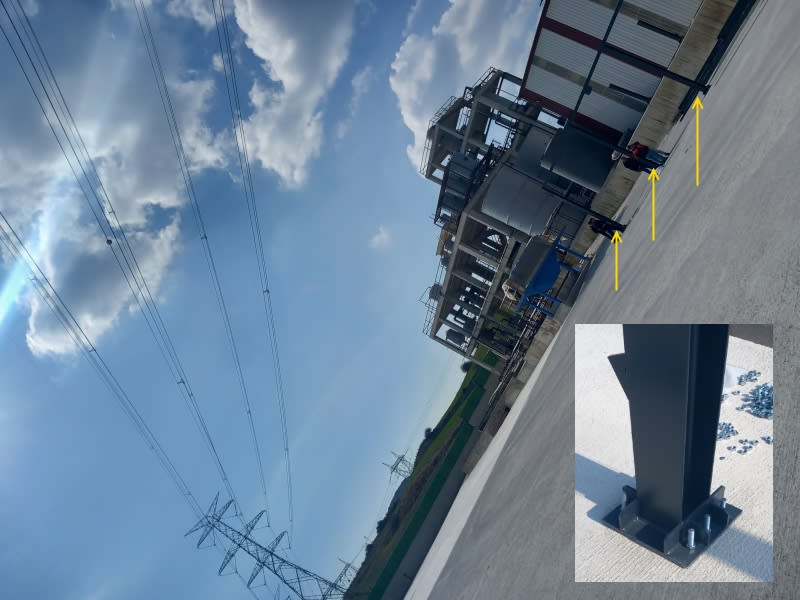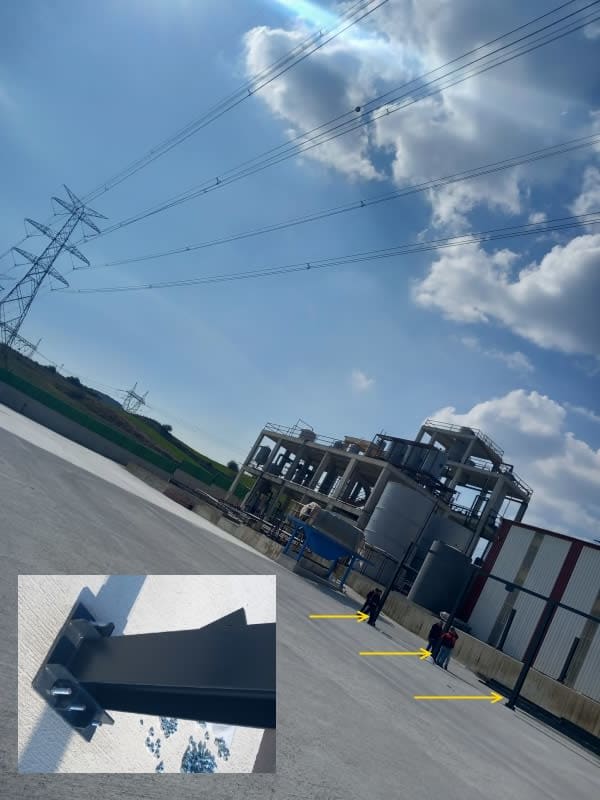Isn't this more induced voltage rather than "static" electricity?
I would agree it definitely is, but I wasn't about to drag a chemicals guy into the minutiae of electrostatic and/or electromagnetic induction, as I tend to get called a picky bastard whenever I do that
![[smile] [smile] [smile]](/data/assets/smilies/smile.gif)
! Thanks for taking that on so I didn't have to.
As to the location, which came first, the tower line or the chemical handling facility?
If a transmission company put up the line over an established handling facility, methinks they would bear some accountability for assisting with the mitigation of the conditions described.
If the handling facility was deliberately built in a HV right-of-way, my first thought would be to wonder why; land for sale on the cheap or something?
The following concerns me, however:
The platform will have a FRP roof as well.
What will be the height of this structure above grade? Has conductor sag been taken into account? You would not want to be in the unenviable position of having put up this structure without the approval of the Authority Having Jurisdiction [ AHJ ]; if the line is ever heavily loaded on a hot summer's day . . .
A sub-contractor once installed lighting standards / pylons in a Toronto Transit Commission parking lot directly under a 230 kV right-of-way without asking the right questions or getting any approvals. The electrical sparks that subsequently flew when the line was heavily loaded on a hot summer's day put on quite a spectacular show; the legal sparks that flew afterward put on a show that was in ways even more spectacular . . .
CR
"As iron sharpens iron, so one person sharpens another." [Proverbs 27:17, NIV]



![[bigsmile] [bigsmile] [bigsmile]](/data/assets/smilies/bigsmile.gif)

![[smile] [smile] [smile]](/data/assets/smilies/smile.gif) ! Thanks for taking that on so I didn't have to.
! Thanks for taking that on so I didn't have to.